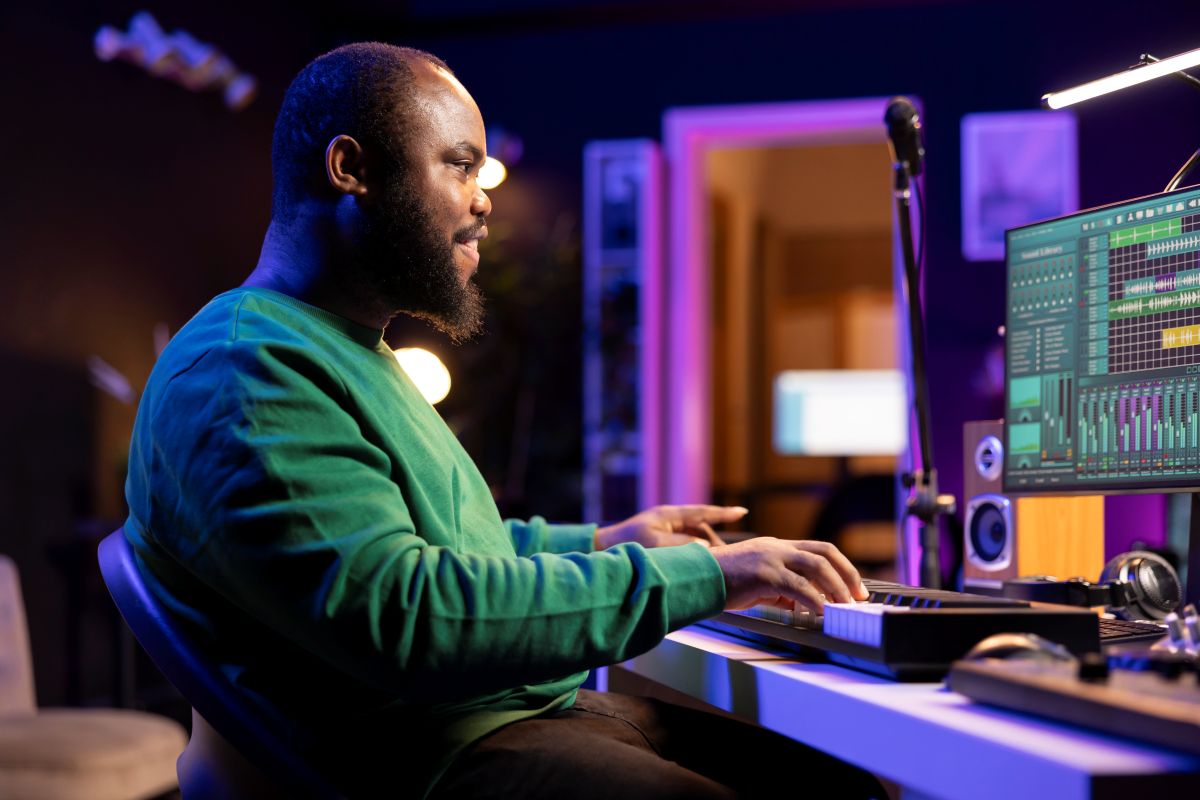
Video Production Johannesburg: The Future of Voiceovers
Think about the last time you were watching a video or playing a game, and you heard a voice that just seemed to come from nowhere—a sound that did not just speak to you, but surrounded you. Or maybe you were listening to an audiobook and the narrator’s tone shifted so smoothly, it felt like they were right there in the room with you, adjusting based on your mood. Now, imagine if that voice could actually change depending on what you were doing or how you were reacting. Sounds pretty futuristic, right? Well, the future of voiceovers is already here, and it is pushing the limits of what we have come to expect. From spatial audio in virtual reality to artificial intelligence that personalises your experience, the way voiceovers are used is being transformed before our very eyes. For video production Johannesburg, understanding these advancements is key—not just to keep up, but to create content that feels fresh, interactive, and deeply engaging. In this article, we will take a deep dive into how these new technologies are changing the voiceover world, from immersive audio experiences in games and VR to hyper-personalised voiceovers that cater to your exact preferences. Whether you are a brand or someone simply fascinated by the direction of tech, understanding these changes will help you make the most of this exciting evolution.
Spatial Audio & 3D Voiceovers: The Immersive Revolution
Voiceovers are no longer just about narration—they are becoming integral to creating immersive experiences. With the growth of virtual reality (VR), augmented reality (AR), and gaming, voiceovers are being redefined by spatial audio. This technology moves sound around the listener, giving it depth and direction. The result? A 360° experience that places the audience at the centre of the action.
Why It Matters
Spatial audio is important because it enhances the realism of digital content. In VR, the sound of a narrator can shift based on the listener’s movements, making the experience feel more lifelike. For instance, in VR storytelling, a narrator’s voice might move from one side to another, or even seem to come from behind, creating a truly immersive experience. The same technology applies to gaming, where voiceovers adapt dynamically based on a player’s position in the game world. The chilling whispers in a horror game, or the distant voices in a mystery, are now part of a more interactive world.
Real-World Applications
- VR Storytelling: VR has opened up new ways to experience stories. Imagine an audiobook where the narrator’s voice moves around you, enhancing the atmosphere and making you feel like you are part of the story. An example of this is The Turning Forest by BBC, where the sound moves around the listener to deepen the engagement.
- Gaming: In games like Resident Evil VR, voiceovers dynamically shift based on the player’s position. A whisper might seem to come from behind, adding a layer of tension that flat audio simply cannot achieve.
- Virtual Meetings: Devices like Apple’s Vision Pro are taking spatial audio into virtual meetings, allowing voices to seem more natural and immersive, as if the speaker is right next to you.
Challenges to Overcome
For video production Johannesburg, adopting spatial audio requires new techniques. Recording for 360° audio demands special microphones and studio setups to capture the full spatial experience. Voice actors also need to adjust their performance. They may have to simulate distance or direction, performing differently depending on the virtual positioning.
Hyper-Personalised Voiceovers: AI Knows What You Want to Hear
Personalisation is a growing trend across various industries, and voiceovers are no exception. With the help of AI, voiceovers are becoming more personalised to individual preferences and behaviours.
The Trend
Brands and platforms are now using AI to create voiceovers that adjust in real-time to the listener. These voiceovers can refer to the listener’s name, location, or even past preferences, creating a more relevant and targeted experience.
Real-World Applications
- Dynamic Advertising: Think about Spotify or YouTube ads that mention your name or location. These voiceovers feel more personal, and as a result, they engage listeners more effectively. Brands are experimenting with these dynamic ads, making each one feel unique to the listener.
- eLearning: Platforms like Duolingo are using AI-driven voiceovers to adapt their tone based on how engaged the learner is. If a student is struggling, the voiceover might become more encouraging. Alternatively, if they are progressing well, the tone could shift to reflect that, keeping the learner motivated.
- Audiobooks: Personalisation extends to audiobooks as well. Listeners can now choose the style of narration, such as a calm voice for bedtime stories or an energetic tone for workout routines. This level of customisation provides an experience that feels more tailored to the individual.
Ethical and Practical Considerations
The ability to personalise voiceovers through AI raises a few concerns. One major issue is the potential for AI-generated voices to become too realistic, leading to deepfake concerns. There is also the fear that AI could replace human voice actors, particularly in roles that involve repetitive or low-stakes content. However, AI is more likely to assist rather than replace, handling things like scalable ads or educational content while leaving more emotional, nuanced projects to human actors.
For video production Johannesburg, embracing AI-driven voiceovers can add significant value by allowing for personalised experiences in a variety of video content—whether it is dynamic advertising or educational videos that respond to the learner’s needs.
The Next Frontier: What’s Coming?
The future of voiceovers is set to get even more exciting, with emerging technologies pushing the boundaries of what can be done with AI and voice acting.
What to Expect
- Emotion-Aware AI: Imagine a voiceover that changes its tone based on your emotional state. AI is evolving to recognise signs of stress or happiness, adjusting its delivery accordingly. This could make voiceovers feel more natural and human-like, creating deeper connections with audiences.
- Real-Time Language Switching: AI is also enabling voiceovers to seamlessly switch languages or accents in real-time. This could be a game-changer for global campaigns, where a single track can adapt to different regions and languages without needing multiple recordings. This level of flexibility is particularly valuable for brands aiming to reach diverse audiences.
- Interactive Narratives: AI is also paving the way for more interactive content. Imagine a video game or ad where the user can “talk” to the narrator, asking questions or receiving feedback in real-time. This could redefine the way voiceovers are used, making them a more integral part of interactive content.
Opportunities for Video Production Johannesburg
These new technologies offer exciting possibilities for video production Johannesburg. By incorporating emotion-aware AI or real-time language switching, producers can create more immersive and interactive experiences. This is particularly relevant for global brands looking to create content that feels localised without the need for separate recordings.
Conclusion: A Blend of Human Talent and Technology
While AI and spatial audio are revolutionising the voiceover industry, human voice actors remain indispensable. Machines can generate voices, but they cannot replicate the emotional depth and authenticity that a human actor can provide. In the future, AI will likely handle more repetitive tasks, while human actors will continue to bring heart and soul to more complex roles. For video production Johannesburg, the future will be about finding the right balance between these two forces. AI will improve efficiency, while human actors will ensure that content retains its emotional and narrative power.
Interested in experimenting with spatial audio or personalised voiceovers for your next video? At Sound Idea Digital, we can help to incorporate those ideas into your next project. Get in touch, and let’s explore how these new tech trends can work for you.
We are a full-service Web Development and Content Production Agency in Gauteng specialising in Video Production, Animation, eLearning Content Development, Learning Management Systems, and Content Production.
Contact us for a quote. | enquiries@soundidea.co.za | https://www.soundideavideoproduction.co.za| +27 82 491 5824 |

